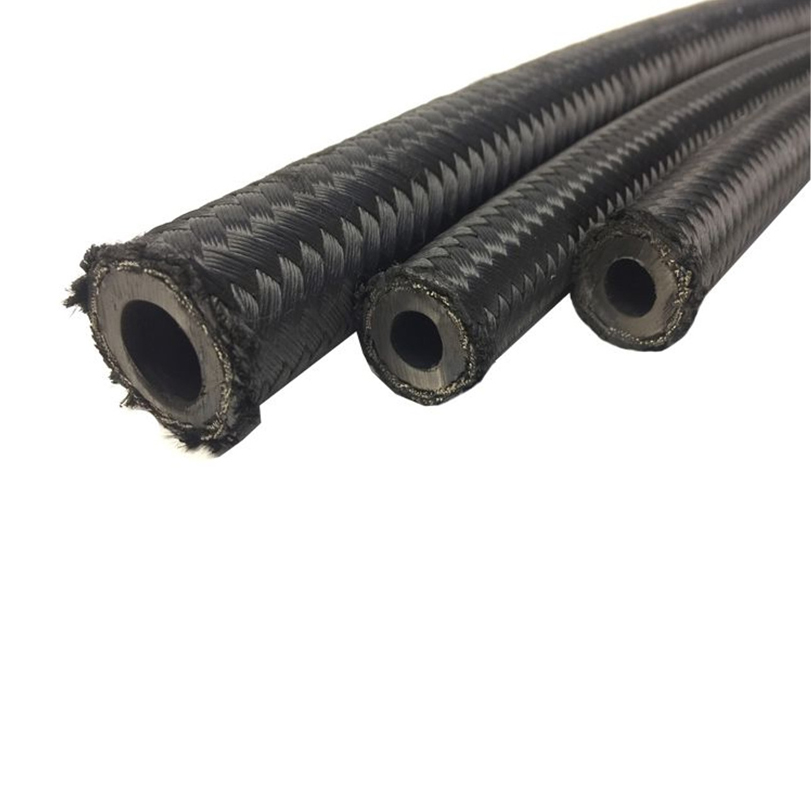335345435
Nov . 09, 2024 21:16 Back to list
High-Pressure 1/2 Inch Hydraulic Hose for Reliable Fluid Transmission Solutions
Understanding 1/2 Hydraulic Hose Applications, Construction, and Maintenance
Hydraulic hoses play a crucial role in the performance and efficiency of hydraulic systems across various industries. Among the many types available, the 1/2-inch hydraulic hose is widely used due to its versatility and capability to handle significant pressure levels. In this article, we will explore the characteristics, applications, construction, and maintenance of 1/2 hydraulic hoses.
Characteristics of 1/2 Hydraulic Hose
The 1/2 hydraulic hose typically has an inner diameter of 0.5 inches, allowing it to transport hydraulic fluids effectively. It comes in various pressure ratings and materials, tailored to meet specific requirements of different applications. Most commonly, these hoses are made from rubber, thermoplastic, or metal, designed to withstand high-pressure environments while maintaining flexibility.
Pressure ratings for hydraulic hoses are vital, as they determine the hose's ability to handle various operating conditions. A 1/2 hydraulic hose can typically support pressures ranging from 1,500 psi to 3,000 psi or more, depending on its construction. Additionally, these hoses are resistant to abrasion, temperatures, and chemicals, making them suitable for harsh environments.
Applications of 1/2 Hydraulic Hose
The versatility of the 1/2 hydraulic hose allows it to be used in numerous applications across different industries
. In construction, these hoses are commonly found in equipment such as excavators, loaders, and cranes, where they facilitate the movement of hydraulic fluids needed to operate various functions.In agriculture, 1/2 hydraulic hoses are used in tractors and other farm machinery to power implements. The efficiency of these hoses ensures that farmers can operate their equipment smoothly, resulting in increased productivity.
Additionally, the automotive industry frequently utilizes 1/2 hydraulic hoses in vehicles for braking systems and power steering. Their ability to maintain consistent pressure and fluid flow is crucial for the safe operation of these systems, underscoring the importance of selecting quality hoses.
1/2 hydraulic hose

Construction of 1/2 Hydraulic Hose
The construction of a 1/2 hydraulic hose typically consists of three main layers the inner tube, the reinforcement layer, and the outer cover.
1. Inner Tube The inner layer of the hose is designed to carry the hydraulic fluid. Materials such as synthetic rubber or thermoplastic are commonly used to provide resistance against the fluids being transported.
2. Reinforcement Layer This layer is crucial for providing strength and durability. The reinforcement is usually made of steel wire or textile materials, which help the hose withstand high pressures and prevent collapse under vacuum conditions.
3. Outer Cover The outer layer protects the hose from external factors such as abrasions, UV rays, and chemicals. It is usually made from durable rubber or synthetic materials that can endure harsh environments.
Maintenance of 1/2 Hydraulic Hose
To ensure the longevity and reliability of 1/2 hydraulic hoses, regular maintenance is essential. Operators should routinely inspect hoses for signs of wear, such as cracks, bulges, or leaks. It's crucial to address any issues immediately to prevent further damage to the hydraulic system.
Additionally, it is recommended to keep hydraulic hoses clean and free from dirt and debris, which can clog the hose and affect performance. Operators should also ensure that hoses are not bent or twisted excessively during operation, as this can lead to premature failure.
In conclusion, 1/2 hydraulic hoses are integral components in various hydraulic systems across numerous industries. Their robust construction and versatility make them indispensable in construction, agriculture, and automotive applications. By understanding their characteristics, applications, and proper maintenance practices, operators can ensure optimal performance and longevity of their hydraulic systems.
-
SAE 100 R17 Black Smooth Cover Hydraulic Hose
NewsMar.07,2025
-
SAE 100 R17 Black Smooth Cover Hydraulic Hose
NewsMar.07,2025
-
SAE 100 R17 Black Smooth Cover Hydraulic Hose
NewsMar.07,2025
-
SAE 100 R17 Black Smooth Cover Hydraulic Hose
NewsMar.07,2025
-
SAE 100 R17 Black Smooth Cover Hydraulic Hose
NewsMar.07,2025
-
steel wire braided hydraulic hose
NewsMar.07,2025



